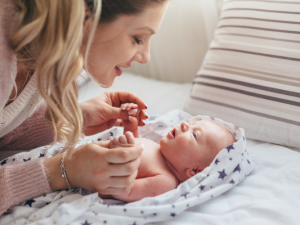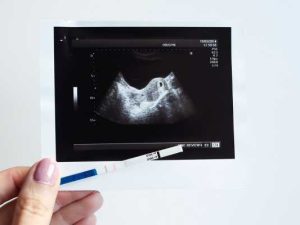DIET for ENDOMETRIOSIS – what to eat TO GET PREGNANT
Transcription :
March is Endometriosis Awareness Month. And this was designed to increase awareness and spread more information about this disease that plagues upwards of 176 million women throughout the world. Understanding inflammation for endometriosis is the first step to making progress in addressing this disorder. And there are a lot of things that we just don’t know about endometriosis, but I want to start talking about the things we do know. If you’re watching this video, that means you may have been diagnosed with endometriosis or you suspect you might have an issue might be caused by endometriosis. We do know that endometriosis causes more inflammation as it grows and the body’s an amazing machine that is trying to address that inflammation. And one of the responses it has to heal it is by actually causing more inflammation. And it’s this response that actually causes more pain and the discomfort or much of the discomfort that we’re experiencing.
Women with endometriosis may also have higher levels of circulating oxidative stress, which can contribute to more pain and inflammation. They may also have an abnormal immune response, which may be a key factor when we are looking at addressing endometriosis in the future. We also know that the tissue in the pelvic area, in the endometrium have higher levels of mast cells, which can also contribute to higher levels of inflammation or of an inflammatory response.
So those are the things we do know about endometriosis, and that’s just the tip of the iceberg. But what we want to discuss in this video is what you can do to reduce the inflammatory response and specifically what you can do with your diet to manage and improve your endometriosis symptoms. So that’s exactly what we’re going to discuss in this video. And these are exactly some of the tips that I use for the women who join my Hope fertility coaching program, who also have endometriosis. But before I do that, I do want to give a quick shout out to Fairhaven Health, who is the sponsor of this week’s video. And specifically, I want to talk about their FH Pro Omega, which their fish oil. And since we’re talking about endometriosis and reducing inflammation, this is one of their products that I do recommend to help reduce the inflammatory response. If you want more information on Fairhaven Health, just use the link in the description below.
My name is Dr. Marc Sklar, also known as The Fertility Expert, and I’ve been working with couples for over 19 years through my online coaching programs and right here in sunny, San Diego at my clinics. And endometriosis is a common condition that we see, which is partly why I wanted to discuss it today and why I wanted to dive deeper into diet, because these are the things that you can absolutely do on your own at home to improve this condition. I created this channel to help spread and inform all of you about what you can be doing to improve your fertility. So this channel is devoted to spreading more information and educating all of you about all things having to do with fertility and reproductive health. I believe we all need more knowledge to start to make better choices because often I find that many of you have been misdiagnosed or misled. You’ve lost the hope to continue to address your reproductive conditions.
And I want to restore that hope and I want to increase your knowledge and understanding about your body and what you can do about it. And that’s exactly my mission with this channel. And I know that a small thing that all of you can do to help me on my mission to share this knowledge is by liking this video, subscribing to my YouTube channel and more importantly, commenting below. Because when you comment on this video, it allows this video to be seen by more women who are dealing with endometriosis. So you can actually impact women from all over the world by just watching and commenting on this video.
So now let’s get into some of the tips when it comes to diet and nutrition, that you can be incorporating into your daily routine that can improve your endometriosis. I’m actually going to start off with some of the things that I want you to be careful of or avoid before I get into the things that I want you to start to add in. So number one is trans fats. That’s right. These are the hydrogenated vegetable oils that we do not want anywhere in our diet. They’re actually heavily regulated, and you need to make sure that you are reading the labels on the foods that you’re eating, so that you can make sure that you are absolutely avoiding these, or keeping these as close to zero in your diet as possible.
Number two is histamine producing foods. So when I started the introduction to this video, I mentioned mast cells. And what happens with mast cells is that they increase histamine production in the body. So if you have endometriosis, you already have a higher amount of mast cell activity in the body and in the endometrial tissue. So we don’t want to add to that burden anymore than we already have to. We actually want to reduce it. And one of the best ways to reduce it is by watching and being careful with the foods we’re intaking that might actually either cause more histamine or have more histamine in them. And so this is something that we want to be mindful of. Yes, when I’m talking about histamine, it’s similar to talking about allergies. So those of you who have allergies have a histamine response, which is why some of the medication or supplements that you might take are antihistamines. This is along the same sort of concept. And when we have that, we actually have more inflammation, more discomfort, and more pain. So we want to be careful for that.
While some of the foods that I love, and I’m sure some of the foods that you love are actually falling into this category. So we have to kind of be careful with that. What I do find with histamine producing foods, and I actually have a histamine sensitivity myself, is that we all have a certain load or burden that we are okay with. But once we exceed that, then it becomes too much. It’s like taking a cup and filling it with water. We’re okay up until a certain amount, but if we don’t stop, it’s going to overflow and spill. And this is the same thing with histamine. We could have maybe a little bit here, maybe a little bit there, maybe some on one day or a little bit every day. But if we start to add that up, then it becomes too much and we contribute to more histamine production and more inflammation and pain.
So I’m actually going to leave a list in the description below of some histamine producing foods that you might want to be mindful of. Some of the things that I have to be careful of are some of the things that I love, like fermented foods like sauerkraut. That’s right. And maybe even a little bit of yogurt, even avocados actually. Those fermented foods actually have much more histamine in them. And so as much as they are good for us, for some of us, they can be a problem. So that is tip number two of things to avoid or be careful of is histamine producing foods.
Number three is excess alcohol. I think for many of us and all agree that alcohol in general is probably not our best friend. It might help us decrease our stress or relax on a weekend or have a little bit more fun when we’re with our friends at a party. But in general, alcohol is not great for us. I do think we can all have maybe a little bit of alcohol on occasion or from time to time, maybe even once a week. But also I think we do need to be careful of the type of alcohol we consume. Some alcohols are going to be more of a problem for us than others.
And again, when we’re talking about histamine, like I mentioned in point two, alcohol does fall under that category and the alcohol that actually has more fermentation, more histamine is going to be even more of a problem. So that would be beer and wine. So I do think maybe a little bit of alcohol is okay, but in general, I do want all of you to be careful. It’s not great for histamine. It’s also not great for pain and inflammation, because it can increase those levels.
The next thing we have to be careful of is excess saturated fats, which can be found in meats and coconut and palm products. So these, we should be able to avoid, but you’re probably not going to be able to avoid them entirely. But if you read labels, if you’re careful of what you cook with, I do think that you can actually lower these levels and be careful with them as well. One way to actually be careful with the amount of saturated fats that you take in is actually increasing your vegetable intake as well. So you don’t have as much animal products or protein in your diet and balancing that out on our plate because typically what we tend to do is have much more animal meat on our plate and less vegetables. And if we can balance that out a little bit more, we can actually lower this as well.
In previous videos, I have talked about chemicals and toxins and I’m going to actually incorporate that right here because often we are still using plastic to heat up our foods or to hold some of our foods and the plastic has chemicals in them. That plastic or those chemicals specifically can be endocrine disruptors and impact endometriosis, inflammation and pain. So even if those things are BPA free, they do have other endocrine disrupting chemicals in them that we want to avoid. So wherever possible, let eliminate the plastic, let’s not heat up our foods in the plastic and let’s try to minimize our exposure to additional chemical toxins.
One of the biggest questions I get asked when it comes to endometriosis and diet, and actually anytime we start talking about fertility and diet is gluten. Should I be gluten free? I think the short answer is absolutely yes, as much as you can. We do believe that gluten and increased amounts of gluten in our diet will increase more inflammation in the body because it’s very difficult for our digestive system to process it. Especially the type of gluten we get here in the United States or I should say the type of wheat and yeast we get here in the United States. And so if we can eliminate or dramatically reduce that, I do think it can help to reduce pain and inflammation across the board.
But I want to give you all real reasons backed by research that you could maybe get behind to get rid of the gluten once and for all in your diet. And so I have two research studies that I’m going to read and I just summarize them. I just want to highlight them here for you, but I am going to read them out.
So one study of around 200 women with endometriosis showed reduced pain and discomfort for those with endo. This included pain during periods and pain during intercourse, that means they reduced gluten or eliminated gluten and they saw reductions in pain just by doing that. That is tremendous.
The second one, another study showed that those who reduced gluten and dairy in their diet had a greater amount of fruit and vegetables and whole foods in their diet. So they increased their fruits, vegetables, and whole foods, which is also a win. And those who followed this dietary pattern reported lower levels of stress and more exercise and less pain and inflammation. So that goes hand in hand. I think these are great tips. And so if all you have to do is get rid of gluten, which I know for some of you sounds difficult, but I promise you, it becomes easier and just becomes a way of life. I think this can have huge impacts on your health, your fertility and your endometriosis.
Okay. So now that we’ve talked about all the things that you should be careful of or eliminate, let’s add some things in, or let’s talk about some of the things that you should be incorporating more into your diet. So we want to increase antioxidants. This helps to manage the inflammation and hopefully reduce pain. So we can get that in a lot of different ways. One of my favorite ways to do that is with a lot of spices and herbs, adding in turmeric, oregano, basil, all these things into our cooking, not only makes them taste better, but they’re also good for us. So that is tip number one.
Tip number two is increase your intake of fish, specifically oily fish like salmon. This helps to get us those essential fatty acids and omega oils that we were talking about. That also helps to reduce inflammation and reduce pain. So this is huge. You might want to also add that as a supplement, but it’s also great to add that in or to increase your fish intake in your diet.
One other way to increase your fat intake, your healthy fat intake, is to add in extra virgin olive oil, which is fantastic. Make sure you get good quality of that, but that’s also really good for us, helps to manage inflammation and can be used in a variety of ways when you’re cooking.
We talked earlier about antioxidants when I was started talking about foods to incorporate and berries are one of my favorite ways to do that. I love berries. They taste awesome, they’re rich in antioxidants, they have a lot of fiber as well, and they’re really easy to incorporate in our diet. I do want to make sure when you’re shopping for your berries, that you make sure you’re getting organic berries. Okay. This is really important when we start talking about quality and this goes across the board with everything that we’re eating. I didn’t mention it in this video, but I have spoken about it in previous videos that quality is essential. If you’re going to consume berries that have been sprayed with pesticides, now you’re just adding to your toxin load, your toxin burden, your chemical load. So we want to get rid of that, make sure these are organic tasty and good for us. And you might have to get them frozen when they’re out of season as well, which you can absolutely get organic.
Endometriosis is such an important topic with so much information to share for all of you. But I want to make sure that this video doesn’t get too long. So I’m going to look at working on another video for next week that continues this conversation and gives you more useful, practical information that you can start to incorporate when you’re dealing with endometriosis. But now I want to hear from all of you, what did you learn from this video? What was new? What was insightful? And most importantly, what are you going to start to incorporate to help you through your journey? Comment below and let me know. I want to hear from all of you. Additionally, if you haven’t already liked this video, make sure you give me a thumbs up. If you’re not already a subscriber to my YouTube channel, make sure you subscribe so you can get notified when I put out a new video for all of you. And until next week’s video, stay fertile.




